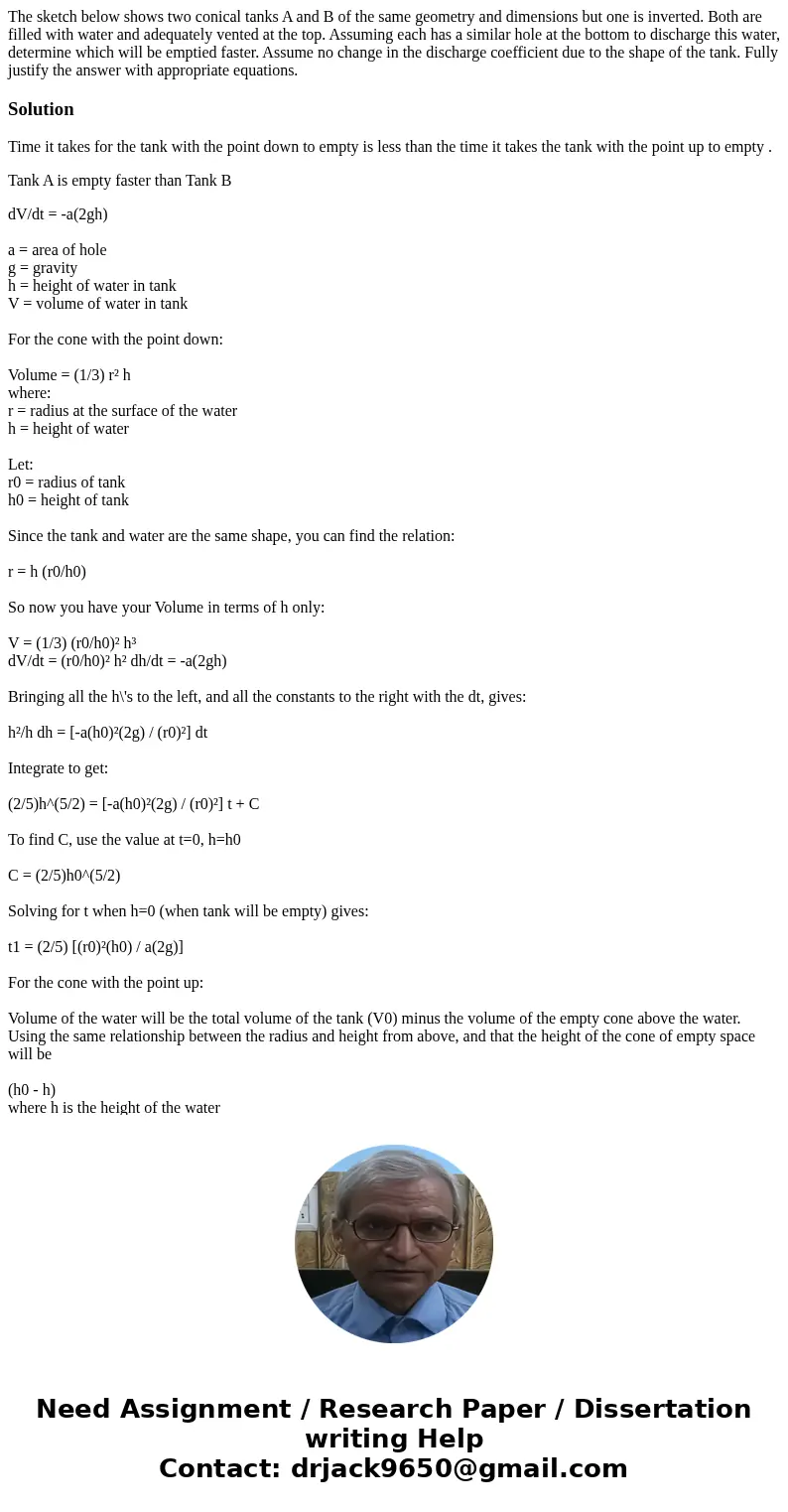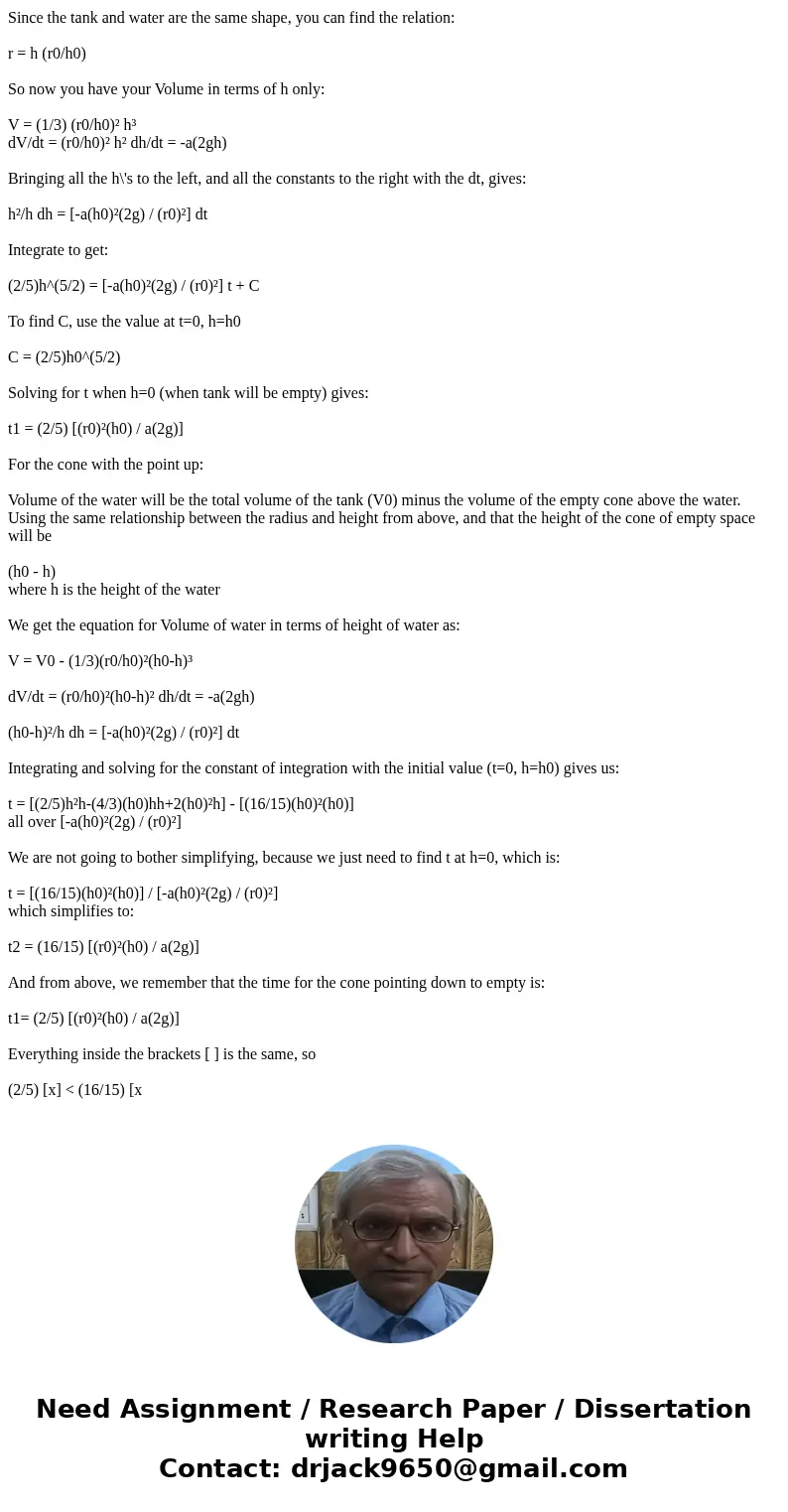The sketch below shows two conical tanks A and B of the same
Solution
Time it takes for the tank with the point down to empty is less than the time it takes the tank with the point up to empty .
Tank A is empty faster than Tank B
dV/dt = -a(2gh)
a = area of hole
g = gravity
h = height of water in tank
V = volume of water in tank
For the cone with the point down:
Volume = (1/3) r² h
where:
r = radius at the surface of the water
h = height of water
Let:
r0 = radius of tank
h0 = height of tank
Since the tank and water are the same shape, you can find the relation:
r = h (r0/h0)
So now you have your Volume in terms of h only:
V = (1/3) (r0/h0)² h³
dV/dt = (r0/h0)² h² dh/dt = -a(2gh)
Bringing all the h\'s to the left, and all the constants to the right with the dt, gives:
h²/h dh = [-a(h0)²(2g) / (r0)²] dt
Integrate to get:
(2/5)h^(5/2) = [-a(h0)²(2g) / (r0)²] t + C
To find C, use the value at t=0, h=h0
C = (2/5)h0^(5/2)
Solving for t when h=0 (when tank will be empty) gives:
t1 = (2/5) [(r0)²(h0) / a(2g)]
For the cone with the point up:
Volume of the water will be the total volume of the tank (V0) minus the volume of the empty cone above the water. Using the same relationship between the radius and height from above, and that the height of the cone of empty space will be
(h0 - h)
where h is the height of the water
We get the equation for Volume of water in terms of height of water as:
V = V0 - (1/3)(r0/h0)²(h0-h)³
dV/dt = (r0/h0)²(h0-h)² dh/dt = -a(2gh)
(h0-h)²/h dh = [-a(h0)²(2g) / (r0)²] dt
Integrating and solving for the constant of integration with the initial value (t=0, h=h0) gives us:
t = [(2/5)h²h-(4/3)(h0)hh+2(h0)²h] - [(16/15)(h0)²(h0)]
all over [-a(h0)²(2g) / (r0)²]
We are not going to bother simplifying, because we just need to find t at h=0, which is:
t = [(16/15)(h0)²(h0)] / [-a(h0)²(2g) / (r0)²]
which simplifies to:
t2 = (16/15) [(r0)²(h0) / a(2g)]
And from above, we remember that the time for the cone pointing down to empty is:
t1= (2/5) [(r0)²(h0) / a(2g)]
Everything inside the brackets [ ] is the same, so
(2/5) [x] < (16/15) [x


 Homework Sourse
Homework Sourse